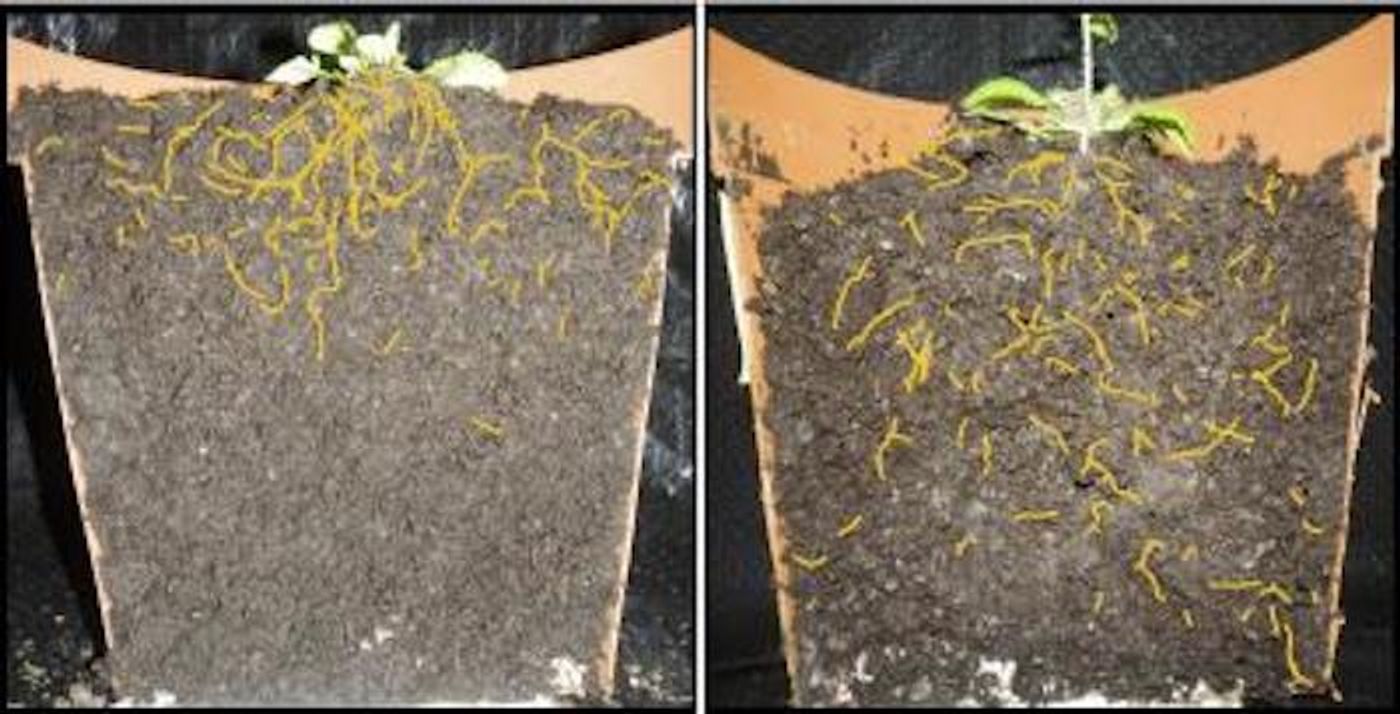Plants need nutrients from soil to be able to develop and grow, and when they don’t get enough, it can stunt their growth or cause death. In agriculture, that can reduce yield and quality. Plants use their roots to aquire these critical nutrients and will increase the surface area of their root system to reach more of them when supplies are limited. The degradation of soil quality is becoming a more serious problem, however, which will be exacerbated by climate change.
Scientists at the Salk Institute have identified a gene that helps control whether plant roots remain shallow or grow deeply into soil. This work can help elucidate the mechanisms governing root structure and how plants adapt to changes in rainfall. It can aid researchers in developing hardier plants that can store more carbon dioxide underground, which can help reduce the amount of it in the atmosphere. This effort was part of the Harnessing Plants Initiative at the Salk, and has been reported in Cell.
"We are incredibly excited about this first discovery on the road to realizing the goals of the Harnessing Plants Initiative," said study senior author and Associate Professor Wolfgang Busch, a member of Salk's Plant Molecular and Cellular Biology Laboratory, and Integrative Biology Laboratory. "Reducing atmospheric CO2 levels is one of the great challenges of our time, and it is personally very meaningful to me to be working toward a solution."
The scientists looked for genes in a common research plant called thale cress (Arabidopsis thaliana) that control a hormone called auxin. Auxin is known to impact many parts of plant growth, and is key to guiding the architecture of the roots.
"In order to better view the root growth, I developed and optimized a novel method for studying plant root systems in soil," explained study first author Takehiko Ogura, a postdoctoral fellow in the Busch lab. "The roots of A. thaliana are incredibly small so they are not easily visible, but by slicing the plant in half we could better observe and measure the root distributions in the soil."
A gene they identified called EXOCYST70A3 was found to regulate root system architecture directly; it impacts a protein that influences auxin transport, called PIN4. The researchers modified EXOCYST70A3 and found that the root system began to grow more deeply into soil, and changed orientation.
"Biological systems are incredibly complex, so it can be difficult to connect plants' molecular mechanisms to an environmental response," said Ogura. "By linking how this gene influences root behavior, we have revealed an important step in how plants adapt to changing environments through the auxin pathway."
"We hope to use this knowledge of the auxin pathway as a way to uncover more components that are related to these genes and their effect on root system architecture," noted Busch. "This will help us create better, more adaptable crop plants, such as soybean and corn, that farmers can grow to produce more food for a growing world population."
Sources: AAAS/Eurekalert! via Salk Institute, Cell









